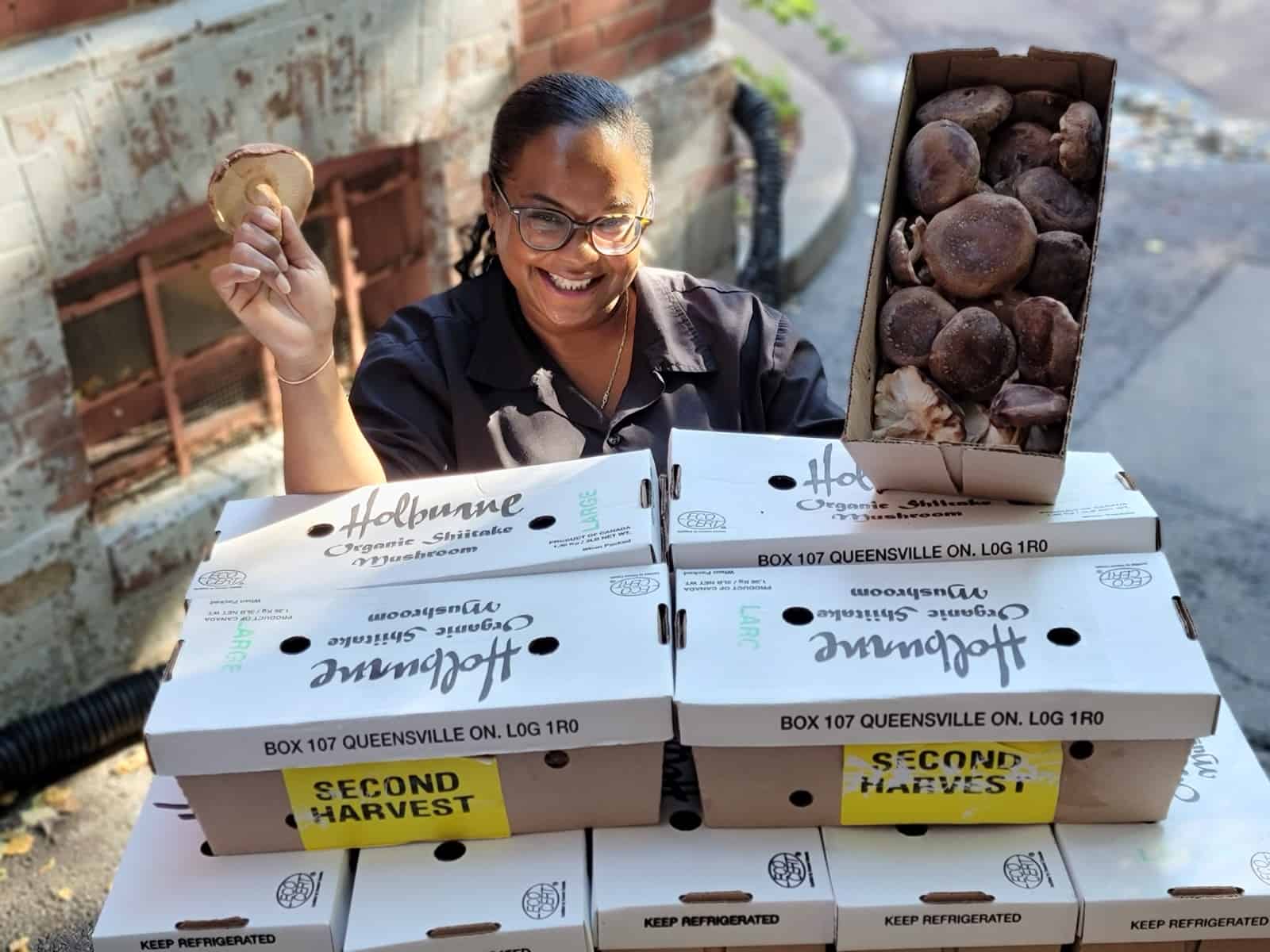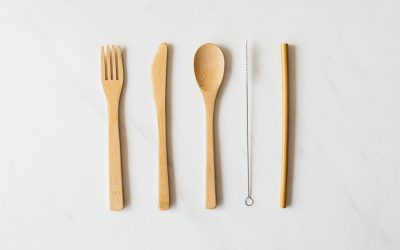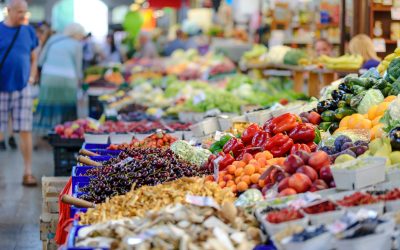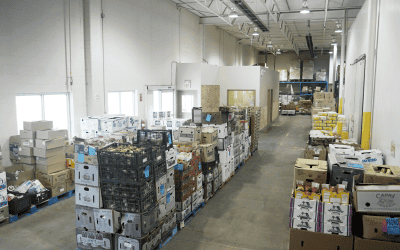An interview on donating surplus food in Canada with Holburne Mushroom Farm
Farmers in Canada ride a rollercoaster of good times and bad when it comes to supply and demand. Sometimes, farmers can’t produce enough inventory to keep up with the needs of distributors, retailers and consumers. Other times, however, sales slow and they’re left with surplus edible food.
Holburne Mushroom Farm is a family-owned and operated wholesale farm business based in Queensville, Ontario. In fact, it’s currently the largest supplier of fresh organic shiitake and oyster mushrooms
in Canada. It produces 25,000 pounds of organic shiitake mushrooms and 5,000 pounds of organic oyster mushrooms every week from its 20,000-square-foot facility. Annual distribution from Holburne surpasses 1.3 million pounds. Recently the company has begun donating surplus mushrooms to Second Harvest.We recently caught up with Stephen Rotiroti, co-owner and logistics manager of Holburne Mushroom Farm to talk about the recent donations, discuss the current climate around
produce manufacturing and to learn about the farm-to-table lifecycle for mushrooms in Canada.“Mushrooms are harvested 365 days a year. Every day we pick a fresh crop so there is no ‘not picking the mushrooms’ day. It has to be done every single day. When they’re ready to be harvested, they need to be harvested. You can’t leave them growing while you wait for more sales, because if you leave them, they spoil.”
—Steven Rotiroti, co-owner and sales and logistics manager, Holburne Mushroom Farm
Donating Surplus Food: An Interview with Holburne Mushroom Farm, Canada
How’s it going?
Steven: These are crazy times for produce in Canada; people are speculating different things when it comes to why. The main one is the general consensus that people are being more money conscious at the grocery stores.
Is this a sign of the times for food in Canada?
S: I’ve talked to other farmers and wholesalers and they’re all saying the same thing. Whether they’re farming mushrooms like us, or fresh or root vegetables, or fruit, the last four or five months have been a rollercoaster for produce in Canada. There’s been lots of inventory, then no inventory. Great sales; no sales. So far, 2022 has been very slow and I think it’s a perfect storm.
Everything is more expensive, interest rates are going up, gas is ridiculous, as are food prices. We’re not really affected by climate changes growing-wise, because we’re farming indoors, but all of our inputs are going up. For instance, cardboard has more than doubled in price over the last year—that’s how we package and ship our mushrooms to our distributors. When gas or diesel prices go up then our carrier rates go up. So on. Everybody feels it.
Mind you, the mushroom industry tends to fluctuate and the summer is one of our slow seasons, whereas fall and winter are our busiest.
When Food Becomes Surplus: The Farm-to-Table Story of Surplus Food
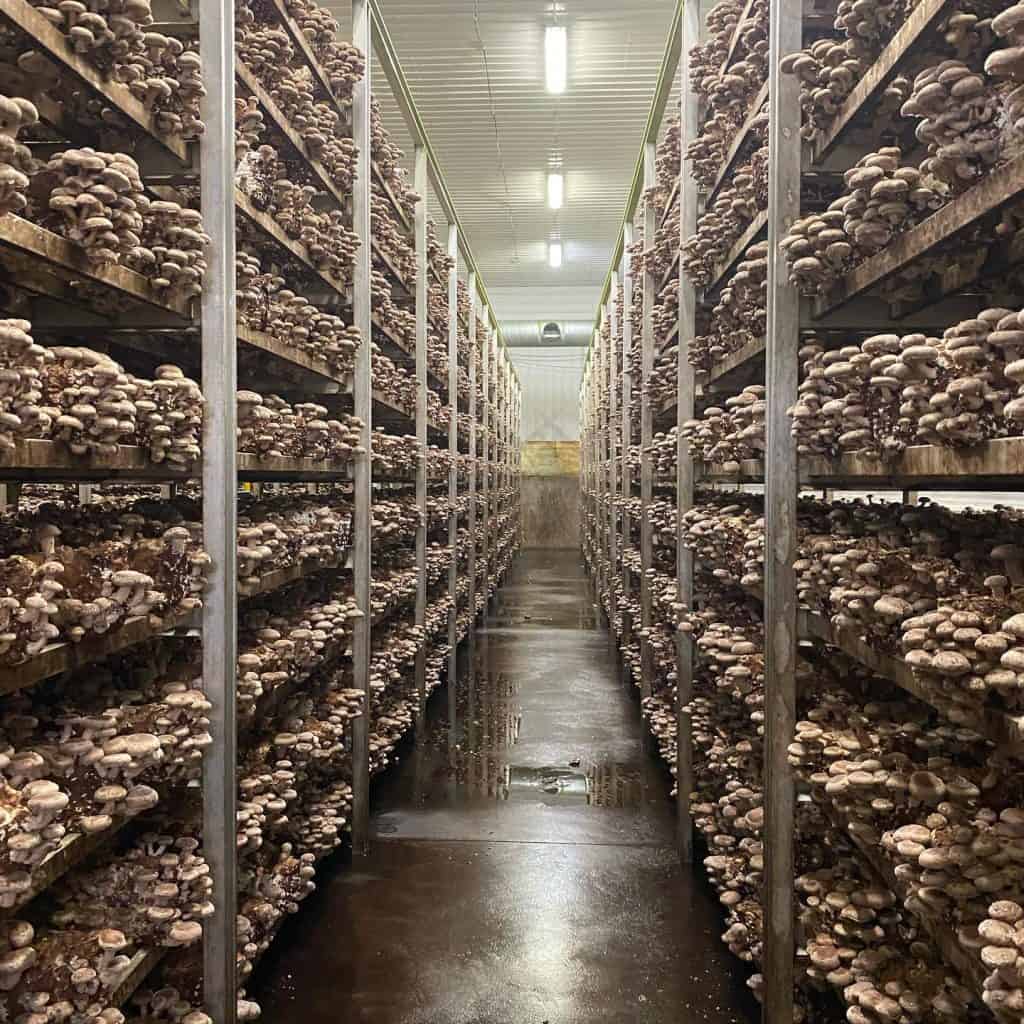
Tell me more about mushroom farming and harvest. What’s the farm-to-table lifecycle of a mushroom?
S: The shelf life of a mushroom is very short – like a couple of weeks. So there is a constant supply of fresh mushrooms going from our farm to distributors and retail stores—and eventually to tables.
It starts with our own compost mixture that has mushroom spores in it and other good things. That ferments for 10-12 weeks before it’s ready for the grow room where we actually grow the mushrooms. Harvest happens 6-8 days later. We harvest the mushrooms, package them and a day or two later, they go through the rest of the food supply chain. It’s repackaged, branded, shipped and on the shelves within days. Everything depends on how fast people move. It’s a pretty short timeline from farm to table for mushrooms.
It’s summer, so you’re harvesting mushrooms every day, but people aren’t buying as much because it’s your slow season and these are unprecedented times. What do you do with the surplus?
S: We have three options. One: when we’re coming up on slow seasons, we can predict it and hold off a bit on production. We do this by putting out less compost so that we grow fewer mushrooms, but then we have a surplus of compost. Everything is connected and impacts something else in farming. Two: we can let it go to waste, which of course, does not benefit anybody and is a waste of a product that is still perfectly fine for the market. Or, three: we can donate the surplus to a good cause and put our food to use.
How did you hear about Second Harvest?
S: Other wholesalers and I were talking about the slow season and these challenging times that are making our sales and inventory fluctuate at unpredictable levels. Someone mentioned Second Harvest food rescue; so I got in touch. I saw the opportunity for us to do something good.
How has donating surplus food to Second Harvest gone so far?
S: It’s been a win-win, actually. We’re all about helping people. We’re a small family business and if we can do anything to help the community or province—or further, depending on how far these mushrooms go—why wouldn’t we? We farmed them to be eaten!
Plus, our mushrooms are niche, so it’s high-end gourmet and not everybody knows about shiitake or oyster mushrooms. Second Harvest distributes our product to their vast network of food banks, kitchens, and organizations and feeds people who may never have tried our mushrooms before. We’re getting great feedback that people are loving them! So there’s this added marketing perk that we hadn’t considered when we donated the mushrooms in the first place.
Not only are we getting our mushrooms out there to more people, but we’re also helping to feed people something healthy and nutritious while avoiding wasteful surplus. We can’t complain, but it’s a hurdle we must overcome. We have to adapt. We don’t know what the future brings, but we need to remain optimistic that the market will rebound and sales will start to get back to normal.
“Thank you to Second Harvest and to Holburne Mushroom Farm for this great donation of mushrooms! Now more than ever access to fresh produce is so important for being able to serve healthy balanced meals to the community. We really appreciate it!”
––Feed it Forward, a non-profit organization in Toronto
Thank you for talking with us (and donating)! Any parting wisdom for your fellow farmers when it comes to donating surplus food?
S: The way that I see it, sometimes, for whatever reason, we farmers and producers have a surplus of products. The right thing to do is to give it to people and organizations who will be able to do something good with it. There are lots of people going through hard times, and we donors should be proud of the fact that we are helping organizations that impact people’s lives for the better.
Learn more about donating surplus food with Second Harvest food rescue.



